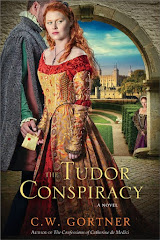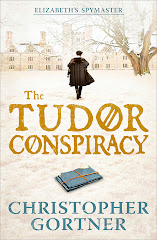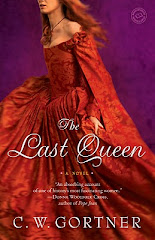I'm delighted to welcome back Juliet Grey, who is currently on tour for DAYS OF SPLENDOR, DAYS OF SORROW, the second novel in her sumptuous trilogy on the life of Marie Antoinette. The Historical Novels Review praises the novel as "[an] engaging voice, coupled with vibrant descriptions . . . really thrusts the reader into the story." Today, Juliet offers this fascinating guest post on the myth and reality of one of history's most misunderstood and defamed queens.
Please join me in welcoming Juliet Grey!
EXONERATING MARIE ANTOINETTE: Separating Truth from Propaganda
DAYS OF SPLENDOR, DAYS OF SORROW, the second novel in my
historical fiction trilogy on the life of Marie Antoinette, focuses on the
fifteen years she reigned alongside her husband, Louis XVI, from the death of
his grandfather Louis XV in May, 1774, to the days following the violent fall
of the Bastille in July 1789.
Paris, 1774. At the tender age of eighteen, Marie Antoinette ascends to the French throne alongside her husband, Louis XVI. But behind the extravagance of the young queen’s elaborate silk gowns and dizzyingly high coiffures, she harbors deeper fears for her future and that of the Bourbon dynasty.From the early growing pains of marriage to the joy of conceiving a child, from her passion for Swedish military attaché Axel von Fersen to the devastating Affair of the Diamond Necklace, Marie Antoinette tries to rise above the gossip and rivalries that encircle her. But as revolution blossoms in America, a much larger threat looms beyond the gilded gates of Versailles—one that could sweep away the French monarchy forever.
Paris, 1774. At the tender age of eighteen, Marie Antoinette ascends to the French throne alongside her husband, Louis XVI. But behind the extravagance of the young queen’s elaborate silk gowns and dizzyingly high coiffures, she harbors deeper fears for her future and that of the Bourbon dynasty.From the early growing pains of marriage to the joy of conceiving a child, from her passion for Swedish military attaché Axel von Fersen to the devastating Affair of the Diamond Necklace, Marie Antoinette tries to rise above the gossip and rivalries that encircle her. But as revolution blossoms in America, a much larger threat looms beyond the gilded gates of Versailles—one that could sweep away the French monarchy forever.
 Picking up, chronologically, where the first novel in the
trilogy, BECOMING MARIE ANTOINETTE, left off, DAYS OF SPLENDOR, DAYS OF SORROW
covers a lot of ground, from Marie Antoinette's early years as queen when the
public loved her, to her struggles to consummate her marriage and bear France
an heir, to the hedonistic pastimes and pleasures that filled her lonely hours
and offered solace and compensation for the one thing she desired most in the
world—children—to a scandalous and clandestine romance, to the disastrous
"affair of the diamond necklace," which enmeshed her in the greatest
con game of the century and although she was innocent, damaged her already
tarnished reputation beyond measure.
Picking up, chronologically, where the first novel in the
trilogy, BECOMING MARIE ANTOINETTE, left off, DAYS OF SPLENDOR, DAYS OF SORROW
covers a lot of ground, from Marie Antoinette's early years as queen when the
public loved her, to her struggles to consummate her marriage and bear France
an heir, to the hedonistic pastimes and pleasures that filled her lonely hours
and offered solace and compensation for the one thing she desired most in the
world—children—to a scandalous and clandestine romance, to the disastrous
"affair of the diamond necklace," which enmeshed her in the greatest
con game of the century and although she was innocent, damaged her already
tarnished reputation beyond measure.
For more than two centuries, beginning with her reign (as
the accusations started during her lifetime), Marie Antoinette has been blamed
for France’s ills. Her purported lover, the Swedish diplomat Axel von Fersen
wrote to his sister Sophie Piper that she was even blamed for the results of acts
of Nature such as bad harvests. If women overspent on their wardrobes she was
accused of bankrupting the nation by encouraging them to follow the fashionable
trends she set. She was even accused of corrupting the kingdom’s morals because
some women took lovers to afford to keep them in costly garments, jewels, and
accessories, when their husbands could no longer afford to do so—as if it their
extramarital decisions were Marie Antoinette’s personal responsibility!
 If I had a nickel for everyone who mistakenly attributes the “Let
them eat cake” quote to Marie Antoinette and miscasts her as a monarch who was
tone-deaf to the needs of her husband’s subjects, I could afford to live in a
penthouse overlooking Central Park.
Those who know me well have witnessed my reaction, which can be anything
from a cringe to outright vitriol, especially when the ignorance is perpetrated
by a journalist (who should be smart enough to know better) or a politician
(regurgitating the propaganda-as-history lesson that he snoozed through in
school), flinging mud at his opponent by characterizing him as Marie
Antoinette. It’s an insult to the queen
and a complete misread of both her character and of the historical record. But history as we all know is written by the
winners and Marie Antoinette is the French Revolution’s most famous victim,
even more so than her husband Louis XVI,
because as queen of France she was a mere consort with no political power
whatsoever.
If I had a nickel for everyone who mistakenly attributes the “Let
them eat cake” quote to Marie Antoinette and miscasts her as a monarch who was
tone-deaf to the needs of her husband’s subjects, I could afford to live in a
penthouse overlooking Central Park.
Those who know me well have witnessed my reaction, which can be anything
from a cringe to outright vitriol, especially when the ignorance is perpetrated
by a journalist (who should be smart enough to know better) or a politician
(regurgitating the propaganda-as-history lesson that he snoozed through in
school), flinging mud at his opponent by characterizing him as Marie
Antoinette. It’s an insult to the queen
and a complete misread of both her character and of the historical record. But history as we all know is written by the
winners and Marie Antoinette is the French Revolution’s most famous victim,
even more so than her husband Louis XVI,
because as queen of France she was a mere consort with no political power
whatsoever.
And the truth is that France was broken before Marie
Antoinette arrived there at the age of fourteen, already the dauphin’s bride by
proxy. The entire court lived large, with each member of the royal family
having their own satellite court and entourage. They even had their own
separate kitchens. The first Two Estates, the clergy and the nobility (who held
the lion's share of the wealth) did not pay taxes; consequently, the Third
Estate—everyone else—was forced to foot the bill for just about everything, and
when there were natural disasters, such as bad harvests, laborers and tradesmen
had nothing to pay. King Louis XV had already emptied the treasury long before
Marie Antoinette got there, fighting the Seven Years' War (1756-63). Every time
a progressive minister proposed levying taxes on the first Two Estates, the
Parlements (the judicial bodies that voted to ratify a king's edicts, and which
were comprised of clergy and nobility), voted down the proposal. It was akin to
a U.S. President proposing that taxes be raised on the wealthy, and the
congressmen and senators who represent the interests of the wealthiest citizens
consistently voting down the bill so that the wealthiest citizens continued to
be tax exempt and the poorest, who could least afford it, kept getting shafted.
And yet the poorest citizens didn't realize that it was the Parlements who were
standing in the way of tax relief. So they blamed the king. And they blamed
Louis (and Marie Antoinette) because their heads were being filled with
propaganda against them.
 Additionally, because Marie Antoinette was a foreigner, and,
moreover, came from Austria, which had been an enemy of France for 950 years
prior to the treaty that paved the way for her marriage, she became the
scapegoat. She was even mistrusted by others at court who never endorsed her
marriage in the first place. The poor woman couldn't do anything right. Yes, she spent a lot of money, but so did
everyone else at court, especially the king's youngest brother, the comte
d'Artois, whose gambling debts were legion. (Artois was detested by the people
as well, and he was one of the people falsely accused of being one of Marie
Antoinette's lovers). But Marie Antoinette's shopaholicism was not responsible
for bankrupting France. The kingdom was already in deep financial straits;
several dozen gowns and pairs of shoes barely made a dent in the budget;
unfortunately, they were visible signs of extravagance that the people could
relate to
Additionally, because Marie Antoinette was a foreigner, and,
moreover, came from Austria, which had been an enemy of France for 950 years
prior to the treaty that paved the way for her marriage, she became the
scapegoat. She was even mistrusted by others at court who never endorsed her
marriage in the first place. The poor woman couldn't do anything right. Yes, she spent a lot of money, but so did
everyone else at court, especially the king's youngest brother, the comte
d'Artois, whose gambling debts were legion. (Artois was detested by the people
as well, and he was one of the people falsely accused of being one of Marie
Antoinette's lovers). But Marie Antoinette's shopaholicism was not responsible
for bankrupting France. The kingdom was already in deep financial straits;
several dozen gowns and pairs of shoes barely made a dent in the budget;
unfortunately, they were visible signs of extravagance that the people could
relate to
France's commitment in 1778 to aid the American colonists in
their bid for independence from the British crown also contributed mightily to
her financial woes. A series of bad harvests in the late 1780s compounded
matters, and those acts of Nature, added to the plans to increase taxes on
those who truly didn't have the cash to pay, spurred the commoners to heed the
calls to arms from the demagogues who began to foment rebellion. What many people don't realize is that the seeds of the
French Revolution were sown from the top down. From the moment she became
queen, Marie Antoinette alienated many of the courtiers of the old guard who
had been accustomed to certain perquisites during the reign of Louis XV. She
detested court etiquette and not only downsized her entourage, but was
determined not to surround herself with the "toxic" people who had
derided her when she was dauphine, preferring to be waited upon by only a few
close friends, people who had not earned their perqs through centuries of
service to the crown. So, she began by alienating the aristocracy (some of whom
had their own printing presses in their apartments at Versailles), and never
imagined that her actions would come back to bite her. Add to that the liberty fever that had imbued the French
noblemen who'd served as the commanders of mercenary regiments in North America
during America’s War of Independence. These enlightened men had already read
the treatises of the 18th c. philosophers such as Diderot, Voltaire, and
Rousseau. They saw that self-governance could work in America and wanted a
taste of it themselves.
DAYS OF SPLENDOR, DAYS OF SORROW offers an intimate window into
the queen's personal and family life as well as a view of the opulent Bourbon
court and the schemers behind the scenes who contributed to the public opinion
of Marie Antoinette as the symbol for everything that was wrong with the
kingdom. The novel charts the events throughout Marie Antoinette and Louis’s
reign that led to the storming of the Bastille.
While it is of course fiction, it is grounded in historical fact,
offering a view into the monarchs’ hearts and souls and illuminating the
greater truths that lie behind nearly 250 years of spin doctoring.
Thank you, Juliet! Best of luck with this rich and vibrant novel. To learn more about Juliet and her work, please visit her website.






_by_Claes_Van_Visscher.jpg)












